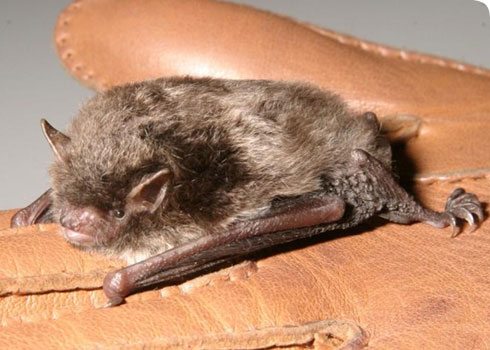Biology
Daubenton’s bats have red brown fur, pale underneath, and a pinkish face which is bare around the eyes.
They also have the following features:
- head and body length: 45–55mm
- forearm length: 34–41mm
- wingspan: 240–275mm
- weight: 7g–12g
Echolocation
Bats emit calls out to the environment and listen to the echoes of those calls that return from various objects in the environment. They use these echoes to locate, range, and identify the objects.
Daubenton’s bat calls range from 35 to 85kHz and are loudest at 45 to 50kHz.
On a bat detector, the calls are heard as a machinegun-like series of regular clicks for bursts of 5 to 10 seconds.
Life cycle
Mating takes place in the autumn and active males will continue to seek out and mate with females throughout the winter.
Maternity roosts are occupied from late spring until October.
Young bats are suckled for several weeks and are fully weaned and able to forage for themselves at 6–8 weeks.
Males or non-breeding females may aggregate during the summer to form their own communal roosts, but sometimes join maternity colonies.
Colony size ranges between 20 and 50 bats, but can be up to 200.
Daubenton’s bats can live for up to 22 years.
